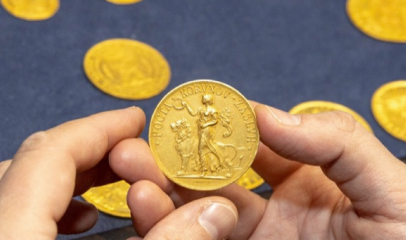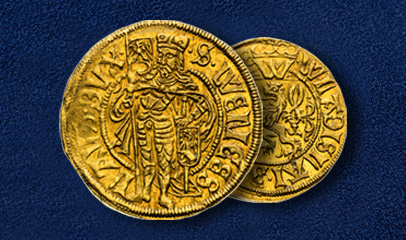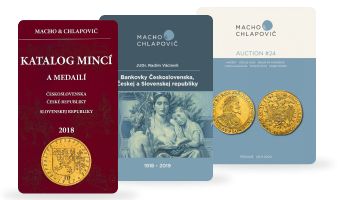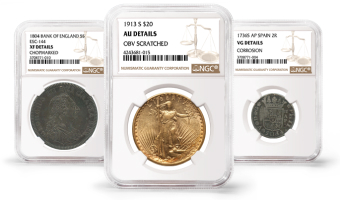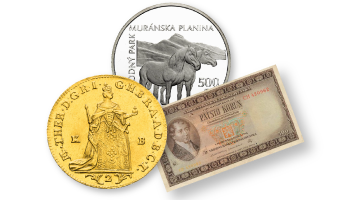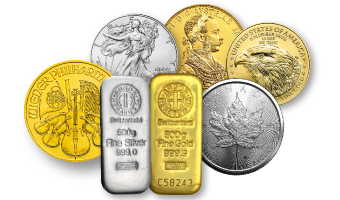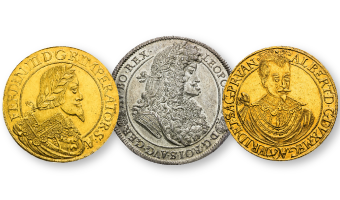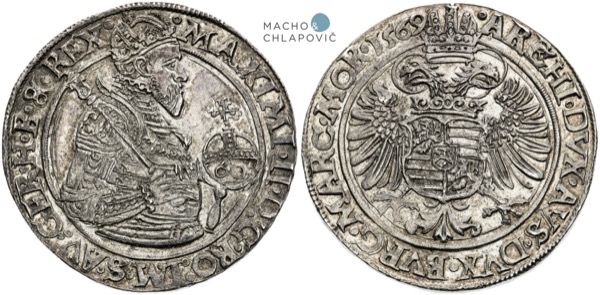
Establishment of the Mint Motivated by Silver Mining
A key moment that led the Bohemian Chamber and Emperor Maximilian II to establish a mint in Budweis in 1569was the increasing yield of silver from the Rudolfov mining district, located in the immediate vicinity of the South Bohemian metropolis.
Silver mining had been developing successfully since the mid-16th century, and from the second half of the 1550s, it became a key source of precious metal for the Prague mint. Miners investing in Rudolfov’s silver extraction hoped that the establishment of a mint in Budweis would enable faster processing of silver and, more importantly, quicker payments for the delivered raw material.
Tobiáš Gebhart and the Founding of the Mint
Around mid-1569, negotiations reached a final decision, and the Prague wardain Tobiáš Gebhart, the future Budweis mintmaster, relocated to Budweis to oversee the opening of the mint. During the summer months of the same year, Rudolfov miners stopped delivering silver to Prague, anticipating the start of production at the newly established mint.
In August 1569, the first coins (10-kreuzers) were minted in Budweis. However, written records do not inform us about the exact time the minting of 60-kreuzers (Guldens) began. Given that Rudolfov silver was no longer supplied to Prague, it must have occurred shortly after the mint’s commissioning.

Item 361. 60 Kreuzer 1569. Budweis. Starting price: €1,400
Identification of Budweis Mintings
A fundamental question, previously addressed in only a single numismatic study (Numismatic Letters, 2009, p. 12), concerns the identification of the coins minted in Budweis in 1569. These mintings likely include unmarked 10, 30, and 60-kreuzers from 1569, produced using dies crafted by the Joachimsthal engraver Nickl Milicz.
He supplied dies to the Joachimsthal mint, marked with the mintmaster’s sign of Jiří Geitzköfler, and from the mid-1560s onward, also to the Prague mint, featuring the Prague mintmaster Harder’s mark.
Evidence of Budweis Origin
The standard numismatic literature (Janovský, Halačka, Chaura) typically classifies these unmarked rough mintings as either Prague or Joachimsthal issues. However, several facts strongly indicate that they actually originate from the Budweis mint:
- A unique Budweis 60-kreuzer from 1569, bearing Gebhart’s mintmaster mark (Janovský 6), struck with Milicz’s reverse die identical to those used for the unmarked mintings.
- Alongside the unique 10 and 60-kreuzers of 1569 marked with Gebhart’s sign, additional 1569-dated coins, especially 60-kreuzers, must have been minted.
- In the second half of 1569, Rudolfov’s silver production was exclusively processed in the Budweis mint. It is highly improbable that only a handful of uniquely marked pieces were minted.

Item 360. 60 Kreuzer 1569. Budweis. Starting price: €1,800
The Issue of Mintmaster Marking
It is very likely that when Tobiáš Gebhart commissioned dies from Nickl Milicz for the first Budweis mintings, he had not yet been officially appointed mintmaster. Written records confirm that he had to repeatedly request his appointment.
As a result, the coins could not bear his official mintmaster mark. This also ruled out any confusion in their identification—Prague, Joachimsthal, and Kuttenberg guldens were always marked with the respective mintmaster’s sign, or alternatively, with a depiction of the Bohemian lion within a shield on the obverse inscription.
Among the earliest known Budweis mintings, the Kokolus collection includes three 1569-dated guldens, listed under No. 359, 360 and 361:
- Item 359. 60 Kreuzer 1569. Budweis. Extraordinary specimen! Remains of mint lustre in the fields. Rare! Grade: good EF | good EF — Starting price: €2,600
- Item 360. 60 Kreuzer 1569. Budweis. Small flan defects. Grade: about EF | about EF — Starting price: €1,800
- Item 361. 60 Kreuzer 1569. Budweis. Rare specimen. Grade: good VF | about EF — Starting price: €1,400
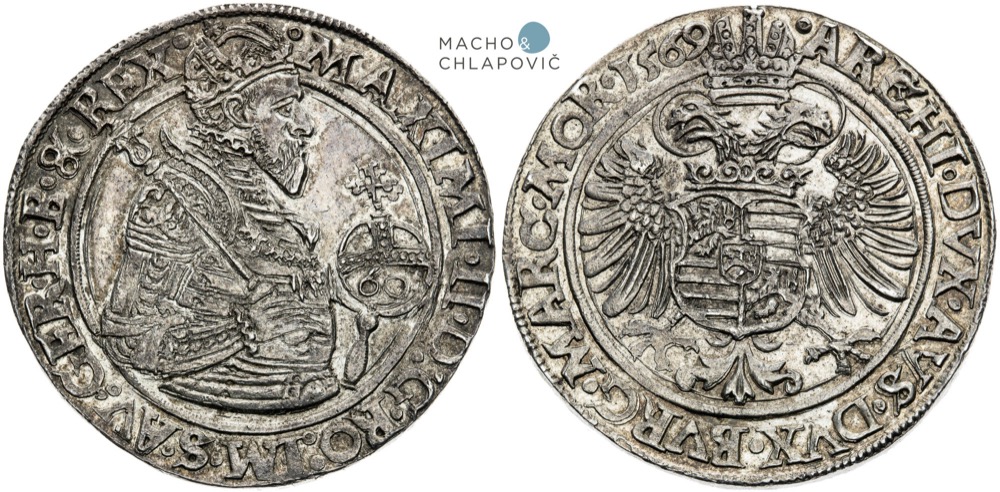
Item 359. 60 Kreuzer 1569. Budweis. Starting price: €2,600
👉 Continue exploring the story of the Budweis mint and discover more rare thalers in the article:
Roughly Minted Budweis Issues from 1569–1577
Exclusive Auction for Numismatic Collectors
On April 25, 2025, the 35th auction will take place in Prague, featuring the Jaroslav Kokolus Collection. At the same time, the traditional numismatic auction #36 will be held, offering additional rare historical coins and numismatic treasures.
How to participate in the floor auction?
- In person on the floor – Join the auction directly at the venue - Hotel Mandarin Oriental, Prague.
- By phone – Place your bids via a phone call.
- Live bidding via the AUEX auction system – Participate in real-time through the AUEX platform.
- Prebidding via the AUEX auction system – Submit your maximum bid in advance through the AUEX auction system.
Auction #36 will, as always, continue with an eLive auction, where, in addition to coins and medals, you will also find a selection of rare banknotes. The eLive auction will take place from April 27, 2025 – April 30, 2025, starting at 6:00 PM.
How to participate in the eLive auction?
- Live bidding via the AUEX auction system – Participate in real-time through the AUEX platform.
- Prebidding via the AUEX auction system – Submit your maximum bid before the auction starts.
AUEX Auction System: Register to bid


